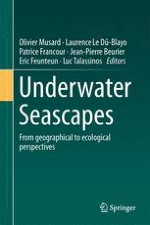2014 | OriginalPaper | Buchkapitel
7. Gaze into the Landscape: Can Sensory Immersion, Landscape Reading and Design, and Landscaping Methods be Adapted to the Underwater Landscape?
verfasst von : Charles Ronzani, Alain Freytet
Erschienen in: Underwater Seascapes
Aktivieren Sie unsere intelligente Suche, um passende Fachinhalte oder Patente zu finden.
Wählen Sie Textabschnitte aus um mit Künstlicher Intelligenz passenden Patente zu finden. powered by
Markieren Sie Textabschnitte, um KI-gestützt weitere passende Inhalte zu finden. powered by
